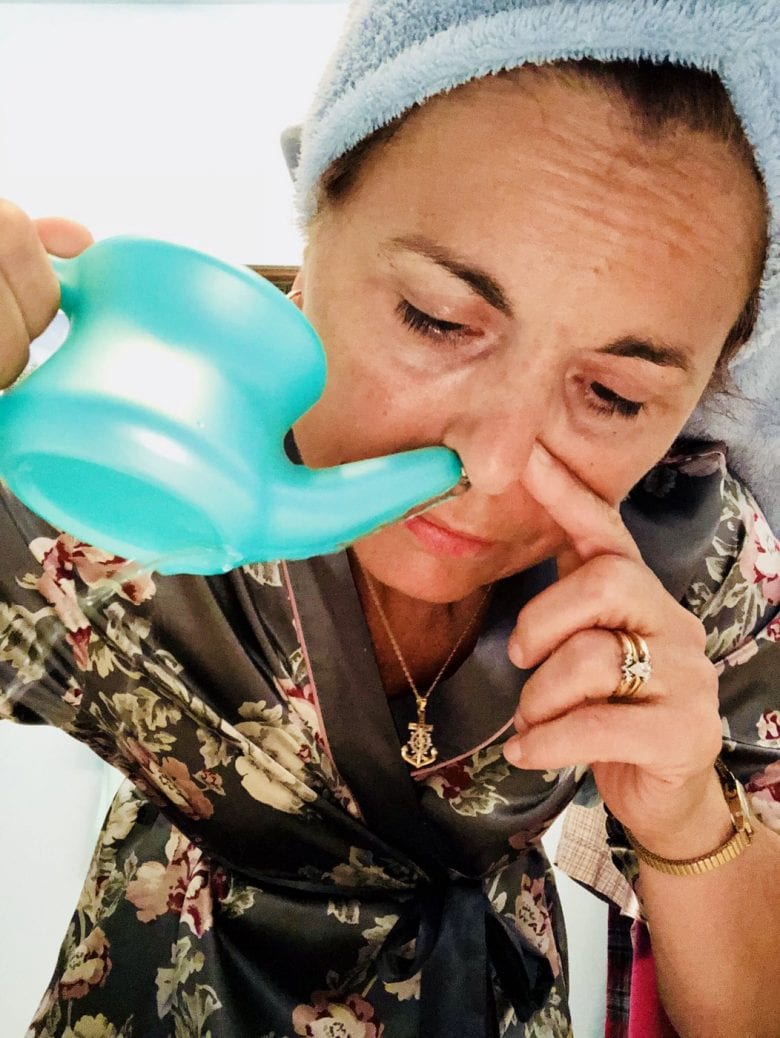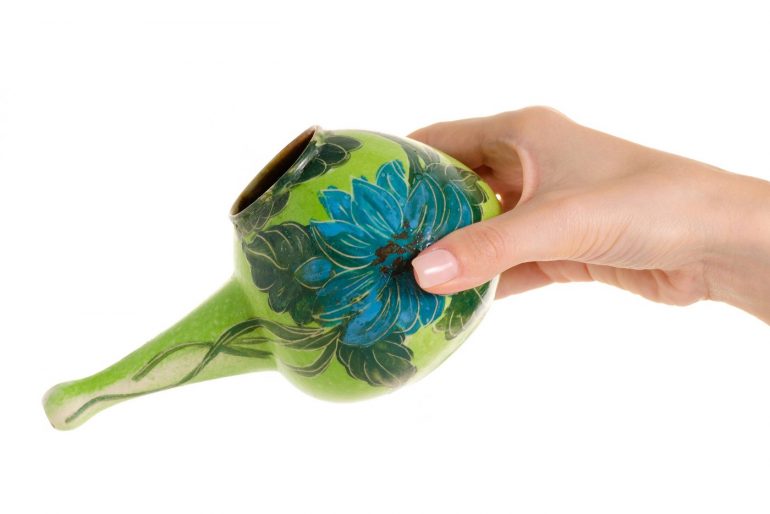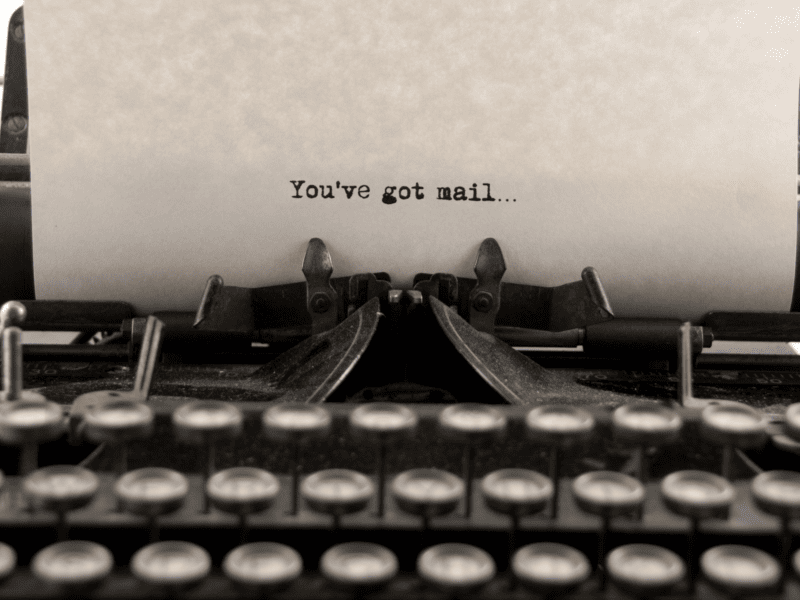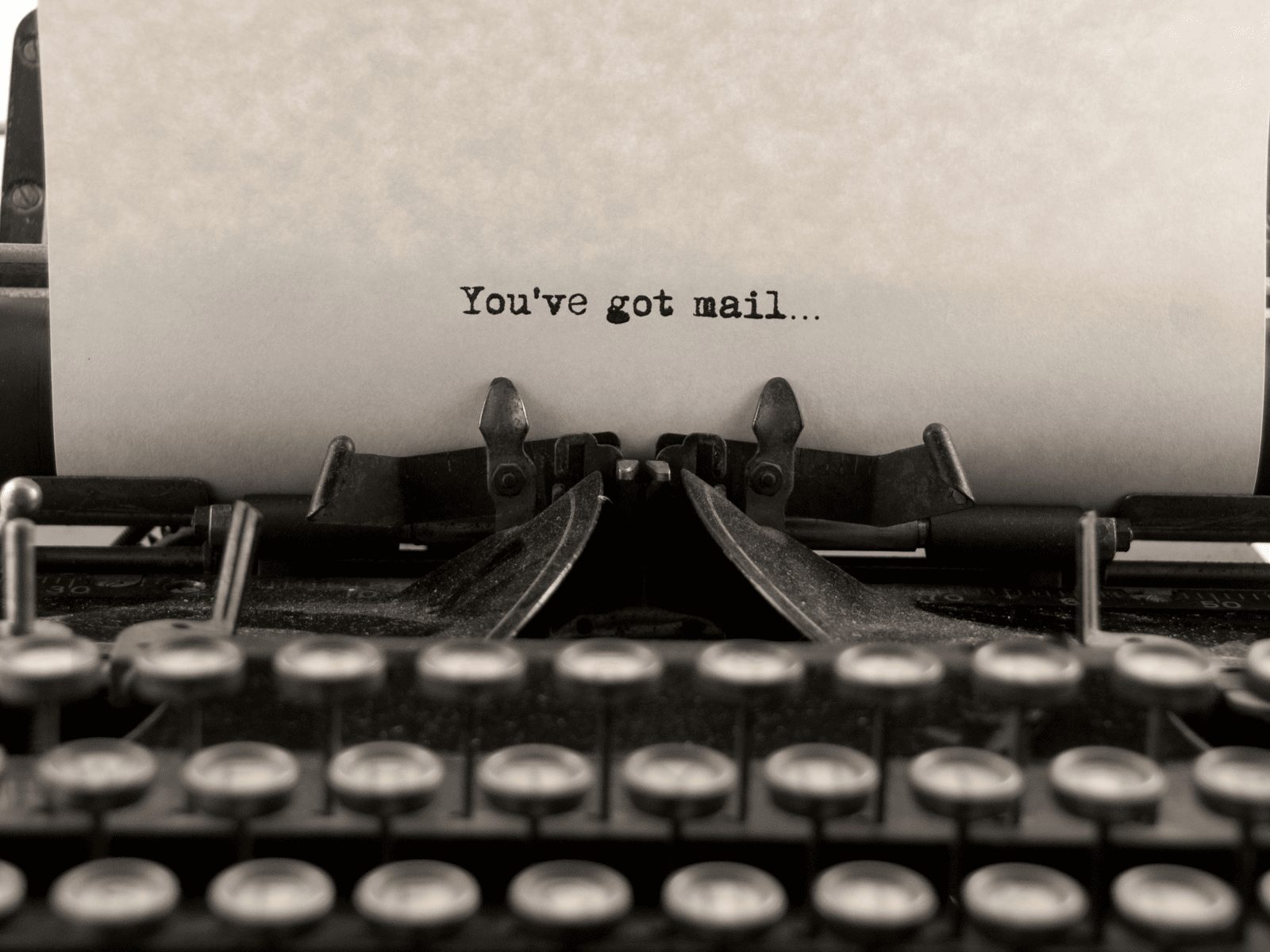The little teapots with long spouts have become a fixture in many homes for reasons that have nothing to do with tea.
Called neti pots, they are used to rinse the nasal passages with a saline (salt-based) solution, and have become popular as a treatment for congested sinuses, colds and allergies, postnasal drip, and for moistening nasal passages exposed to dry indoor air. But there is potentially a big safety issue.
Why would you use a neti pot?
If you have a cold, rinsing the infected mucus out and keeping your nose clean may help you feel better, says Charles Ebert, Jr., MD, MPH, is an associate professor of Otolaryngology/Head and Neck Surgery and medical director of Otolaryngic Allergy Services at the University of North Carolina School of Medicine.
“The evidence has shown that rinsing decreases the length of your acute infection and symptoms,” Dr Ebert says.
In fact, rinses can help with annoying nasal irritation or congestion from a variety of different causes. Says Dr Ebert, “You feel better after rinsing, your cold doesn’t last as long, and you can breathe better,” Dr. Ebert says.
So what’s the problem with nasal irrigation?
It’s not the neti pots (or other nose cleaning tools) themselves that can be dangerous — rather, it’s the water you might use in them.
Nasal irrigators are generally safe and useful products, says Steven Osborne, MD, a medical officer in FDA’s Center for Devices and Radiological Health (CDRH), but they must be used and cleaned properly.
Specifically, the FDA has concerns about the risk of infection tied to the improper use of neti pots and other nasal rinsing devices. They are telling consumers, manufacturers and health care professionals about safe practices for using all nasal rinsing devices, which include bulb syringes, squeeze bottles, and battery-operated pulsed water devices.
The most important thing to beware of is the source of water that is used with any nasal rinsing devices. Tap water that is not filtered, treated, or processed in specific ways is not safe for use as a nasal rinse.
How unsafe? Well, the incorrect use of neti pots may have caused two deaths in 2011 in Louisiana from a rare brain infection that the state health department linked to tap water contaminated with a microscopic organism called Naegleria fowleri — also known as the “brain-eating amoeba.”
Some tap water contains low levels of organisms, such as bacteria and protozoa — including amoebas — which may be safe to swallow because stomach acid kills them. But when they’re not going via the digestive tract, these “bugs” can stay alive in nasal passages and cause potentially serious infections, according to the Centers for Disease Control and Prevention (CDC).

How to use a neti pot or nasal irrigation rinse
The procedure for nasal rinsing may vary slightly by device, but generally involves these steps:
Leaning over a sink, tilt your head sideways with your forehead and chin roughly level to avoid liquid flowing into your mouth.
Breathing through your open mouth, insert the spout of the saline-filled container into your upper nostril so that the liquid drains through the lower nostril.
Clear your nostrils, then repeat the procedure, tilting your head sideways, on the other side.
Nasal rinsing can remove dirt, dust, pollen and other debris, as well as help to loosen thick mucus. It can also help relieve nasal symptoms of allergies, colds and flu.
“The nose is like a car filter or home air filter that traps debris. Rinsing the nose with saline solution is similar to using saline eye drops to rinse out pollen,” Osborne says. The saline, he adds, enables the water to pass through delicate nasal membranes with little or no burning or irritation.
Misleading or missing information
The information included with the device might give more specific instructions about its use and care. However, some manufacturers’ instructions provide misleading or contradictory information, or lack any guidelines.
For example, some manufacturers have recommended using plain tap water; others warn against using it in printed directions, but show its use in pictures or videos.
The device might also come without instructions. If you order a custom neti pot made by an artist, for example, that person might assume you know how to use it.
Of course, always talk to a health care provider or pharmacist if the instructions do not clearly state how to use the device, the types of water to use, if instructions are missing, or if you have any other concerns.
Neti pot questions and answers
What types of water are safe to use in nasal rinsing devices?
- Distilled or sterile water, which you can buy in stores. The label needs to clearly state “distilled” or “sterile.”
- Boiled and cooled tap water — boiled for 3 to 5 minutes, then cooled until it is lukewarm. Previously boiled water can be stored in a clean, closed container for use within 24 hours.
- Water passed through a filter with an absolute pore size of 1 micron or smaller, which traps potentially infectious organisms. (See some water filter options here.)
How can you make a neti post saline solution for nasal irrigation?
Thoroughly combine the following ingredients to make the rinse liquid, then pour it into your neti pot or squeeze bottle.
- 1 heaping tablespoon of salt
- 1 heaping tablespoon of baking soda
- 1 quart of treated water
How do I use and care for my device?
- Wash and dry hands.
- Check that the device is clean and completely dry.
- Use the appropriate water as recommended above to prepare the saline rinse, either with the prepared mixture supplied with the device, or one you make yourself.
- Follow the manufacturer’s directions for use.
- Wash the device with distilled, sterile, or boiled and cooled tap water, and then dry the inside with a paper towel, or let it air dry between uses.
Are nasal rinsing devices safe for kids?
Some children are diagnosed with nasal allergies as early as age 2, Osborne says, and could use nasal rinsing devices at that time, if a pediatrician recommends it. However, he adds that very young children might not tolerate the procedure as easily as would older children or adults.
What are some negative effects to watch out for when using nasal rinsing devices?
Whether allergies, a cold or something else, talk to your healthcare provider to determine if nasal rinsing will be safe or effective for your condition.
If symptoms are not relieved or worsen after nasal rinsing, then return to your caregiver, especially if you had a fever, nosebleed or headaches while using the rinse.








